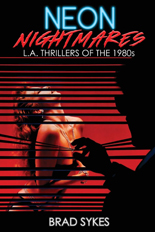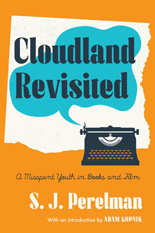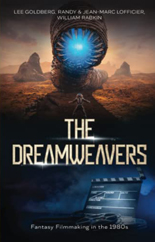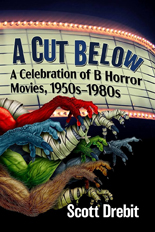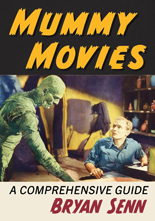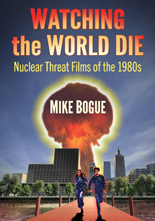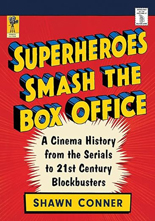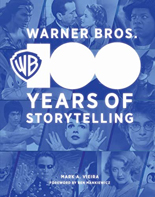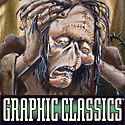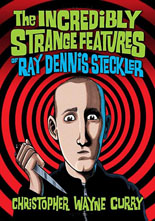 After covering the filmographies of Herschell Gordon Lewis and Ted V. Mikels, Christopher Wayne Curry turns his completist’s eye to a more difficult subject with The Incredibly Strange Features of Ray Dennis Steckler. Certainly this is the only text to draw a dotted line between the director of Rat Pfink a Boo Boo and Luis Buñuel. After all, Steckler was the kind of low-low-budget filmmaker who thought nothing of ending a movie “with three characters the viewer knows and five they do not.”
After covering the filmographies of Herschell Gordon Lewis and Ted V. Mikels, Christopher Wayne Curry turns his completist’s eye to a more difficult subject with The Incredibly Strange Features of Ray Dennis Steckler. Certainly this is the only text to draw a dotted line between the director of Rat Pfink a Boo Boo and Luis Buñuel. After all, Steckler was the kind of low-low-budget filmmaker who thought nothing of ending a movie “with three characters the viewer knows and five they do not.”
Published by McFarland & Co., the book is a thorough examination of the man’s nearly 50-year outré oeuvre in — but mostly on the fringes of — Hollywood. As Curry puts it, “Hollywood was not answering and Steckler was tired of calling.”
Those aware of the psychotronic legend largely do so for his early pictures, including the Arch Hall Jr. vehicle Wild Guitar, the aforementioned accidental superhero spoof Rat Pfink a Boo Boo and the mouthful-titled, monster-musical madness from which Curry’s book takes the most opportune pun, The Incredibly Strange Creatures Who Stopped Living and Became Mixed-Up Zombies!!?
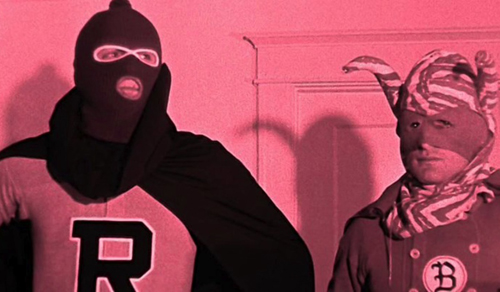
The author takes readers through each in an amazing amount of detail, essentially scene by scene. This would be frustrating if not for Curry using the opportunity to weave in behind-the-scenes stories and facts, historical context, interview quotes and related minutiae all the while; thus, the effect is akin to listening to a solid DVD commentary, both informative and lively. Naturally, his own opinions play a great part. While Curry sees many of Steckler’s deficiencies as a plus, it’s hilarious when he doesn’t, as in his coverage of the padded slasher Blood Shack (aka The Chooper): “Simply put, there should never be protracted conversations about irrigation and filtered water in a horror film.”
A shameless self-promoter, Steckler (who died in 2009) would no doubt be overjoyed with being the focus of an entire book. But no doubt he’d be livid over the chapter devoted to the roughly 75% of his directorial career he not merely disowned, but denied: the dozens and dozens of hardcore pornos. Curry covers them all, but only in brief, because they’re so bad, they don’t merit, er, probing. (And considering how bad Steckler’s legit pics could get, that says a lot.)
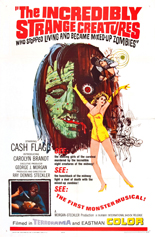 Curry’s all-encompassing description of the X-rated fare says it best: “These films contain the usual humping, bumping and pumping, all of this augmented by mounds of unkempt curlys, arcing ropes of reproductive fluids, pimples, cold sores, in-grown hairs and lots of sweat. … The viewer’s sense of smell is spared, but for the eyes and earls it is an all-out assault.”
Curry’s all-encompassing description of the X-rated fare says it best: “These films contain the usual humping, bumping and pumping, all of this augmented by mounds of unkempt curlys, arcing ropes of reproductive fluids, pimples, cold sores, in-grown hairs and lots of sweat. … The viewer’s sense of smell is spared, but for the eyes and earls it is an all-out assault.”
The book would not be complete without looking at this sordid bulk of Steckler’s work. Same goes for his oft-leading lady, the beautiful Carolyn Brandt (Body Fever), detailing Steckler’s marriage-wrecking infidelities. Without venom, Brandt sheds a light on their personal life to a degree of candidness I’ve not seen reported (not to mention shares a curious tidbit about Ilsa star Dyanne Thorne’s nipples). Curry deserves commendation for telling the whole story, proving a writer can show reverence without being disingenuous.
The only knock against the book is one of unavoidable timing: Severin Films’ recent Steckler box set, in which Curry participated, renders some of the contents out of date, in that projects regarded as lost no longer are. However, these are few and minor.
If you’ve never experienced the uniqueness of a Steckler film, you’re not ready for Incredibly Strange Features. For everyone else, it’s fascinating and fun. —Rod Lott
Get it at Amazon.

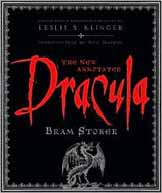 Bram Stoker’s Dracula remains one of the most famous and popular characters in history. Gary D. Rhodes, a university professor, and Dacre C. Stoker, the author’s great grand-nephew, have just discovered one of the two key inspirations that led to the creation of Count Dracula.
Bram Stoker’s Dracula remains one of the most famous and popular characters in history. Gary D. Rhodes, a university professor, and Dacre C. Stoker, the author’s great grand-nephew, have just discovered one of the two key inspirations that led to the creation of Count Dracula.